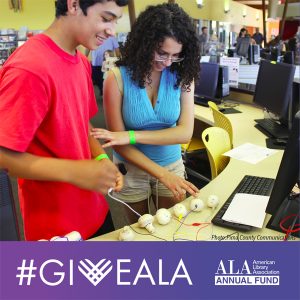
“We need to consider how the world is changing.”
Jaime Casap, education evangelist at Google, opened the 2017 American Association of School Librarians (AASL) National Conference and Exhibition, held November 9–11 in Phoenix, with an examination of the evolving state of education in the US and how it has changed—for better and for worse—with the advance of technology. The future is now, Casap says, and librarians and educators need to know how to connect with and teach a generation of learners who have spent their whole lives in a digital world.
Casap relayed a personal anecdote to illustrate the power of technology education to change lives—studying computer science allowed him to escape poverty as a kid living in New York City’s Hell’s Kitchen neighborhood during the 1970s and 1980s. He also had stats: Computer science majors earn a salary 40% higher than the average college graduate. But a gap exists between where we’re going and where we are, he says. In Arizona, only 10% of schools offer Advanced Placement computer science courses. Today’s learners are digital natives, and schools must offer them tools and resources they need to thrive.
Casap said that without new technological tools educators won’t be able to reach digital natives. “Imagine what life is like for kids who have grown up in a digital generation,” he says. “How they think about learning is different because of the world they grew up in.” Today’s learners are autodidacts when it comes to digital technology, he says, and the educational system has to be retooled to adapt to that. Instead of adhering to old models that stress rote memorization of facts, educators need to teach students problem-solving skills that allow them to use technologies that are already a part of their everyday lives.
“Information on its own is a commodity,” he says. “We need to teach kids how to apply it. We need to teach kids how to find information and put it together.”
Casap stressed that we are at the beginning of this new model, and librarians and teachers are at the forefront of its adoption. “Kids today have hundreds of libraries at their fingertips,” he says. “Librarians need to help kids navigate this information and use it correctly. We need strong digital leaders, and libraries and librarians are key to this new digital economy.”
This notion of using technology to reach learners in new ways was a theme throughout the first day of the conference. It was best exemplified at the IdeaLab, a digital session where 25 presenters from school libraries and vendors used tabletop video displays to demonstrate educational topics. The displays created a more engaging viewing experience than often-static poster sessions, but it was the topics themselves that pointed to the future: using 3D printing and computer modeling to make models of animals that can be dissected in classrooms, reducing the use of real specimens; creating immersive learning experiences with green screens and video editing; and teaching students to use Microsoft’s collaborative software OneNote as a research tool.


